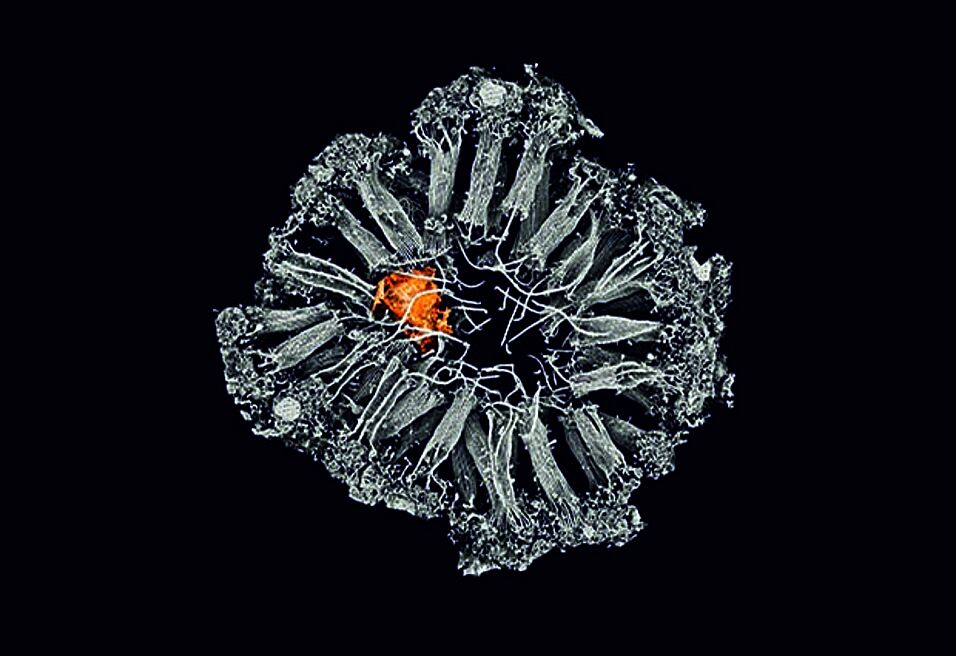Abstract
Sponges are the sister group to other animals, and diverged prior to the evolution of a nervous system, musculature, or gut. Yet, sponge genomes have recently been shown to contain genes encoding key synaptic and muscle proteins. To determine how sponges use these genes, and to shed light on the origin of animal cell types, we generated a comprehensive molecular and morphological atlas of cells in Spongilla lacustris via whole-body single-cell RNAseq. We identified specialized cell types bearing functional and regulatory signatures similar to those of other animals, including specialized contractile cells responsive to nitric oxide signalling, phagocytes involved in innate immunity, and digestive cells that express postsynaptic scaffolding and receptor genes. Remarkably, we also find secretory immune cells expressing presynaptic genes and filled with secretory vesicles that extend projections to enwrap 'postsynaptic' digestive cell microvilli and cilia. Our data reveal a communication system organized around sponge digestive chambers, utilizing conserved modules that became incorporated into the pre- and postsynapse in the nervous systems of other animals.

